- PRÉSENTATION DE L'EPhEP
- L'École
- Les enseignements
- Un Cursus Général, un Cursus Spécialisé
- Le Cursus Général et ses modalités de contrôle
- Le Cursus Spécialisé
- Les Modules de formation Théorique (MTh)
- Le Module de formation Pratique (MP)
- Obligations de volume horaire
- Le Stage Seul
- Le Practicum Seul
- Modalités de contrôle des connaissances du Cursus Spécialisé
- Les enseignants
- Inscriptions
- Politique qualité de l'EPhEP
- Exposé des motifs
- Introduction au travail de l'année
- Livret des Enseignements
- Édito
- Bibliothèque Recherches
- Les dossiers de l'EPhEP
- Cours et conférences : extraits
- Conférences récentes
- Théorie / concepts
- Psychopathologie des névroses
- Psychopathologie des psychoses
- Psychopathologie de l'enfant
- Psychopathologie de l'adolescent
- Questions féminines
- Cognitivisme
- Neurosciences
- Psychothérapie institutionnelle
- Linguistique - signifiant - discours
- Philosophie
- Logique et topologie
- Anthropologie
- Histoire
- Lien social - institutions
- Droit
- Vidéothèque
- Vidéos récentes
- Théorie / concepts
- Psychopathologie des névroses
- Psychopathologie des psychoses
- Psychopathologie de l'enfant
- Psychopathologie de l'adolescent
- Questions féminines
- Cognitivisme
- Neurosciences
- Psychothérapie institutionnelle
- systemie
- Linguistique - signifiant - discours
- Langue - lalangue - la lettre - littérature - arts
- Philosophie
- Anthropologie
- Logique - topologie
- Histoire
- Lien social - Institutions
- Droit
- Parutions
- Dialogues
Agenda
Journées
Actualités
ALI-Bretagne et Collège de Psychiatrie Paris
04/05/2024 - 09:30
Parutions
Claude Landman, Stéphane Thibierge

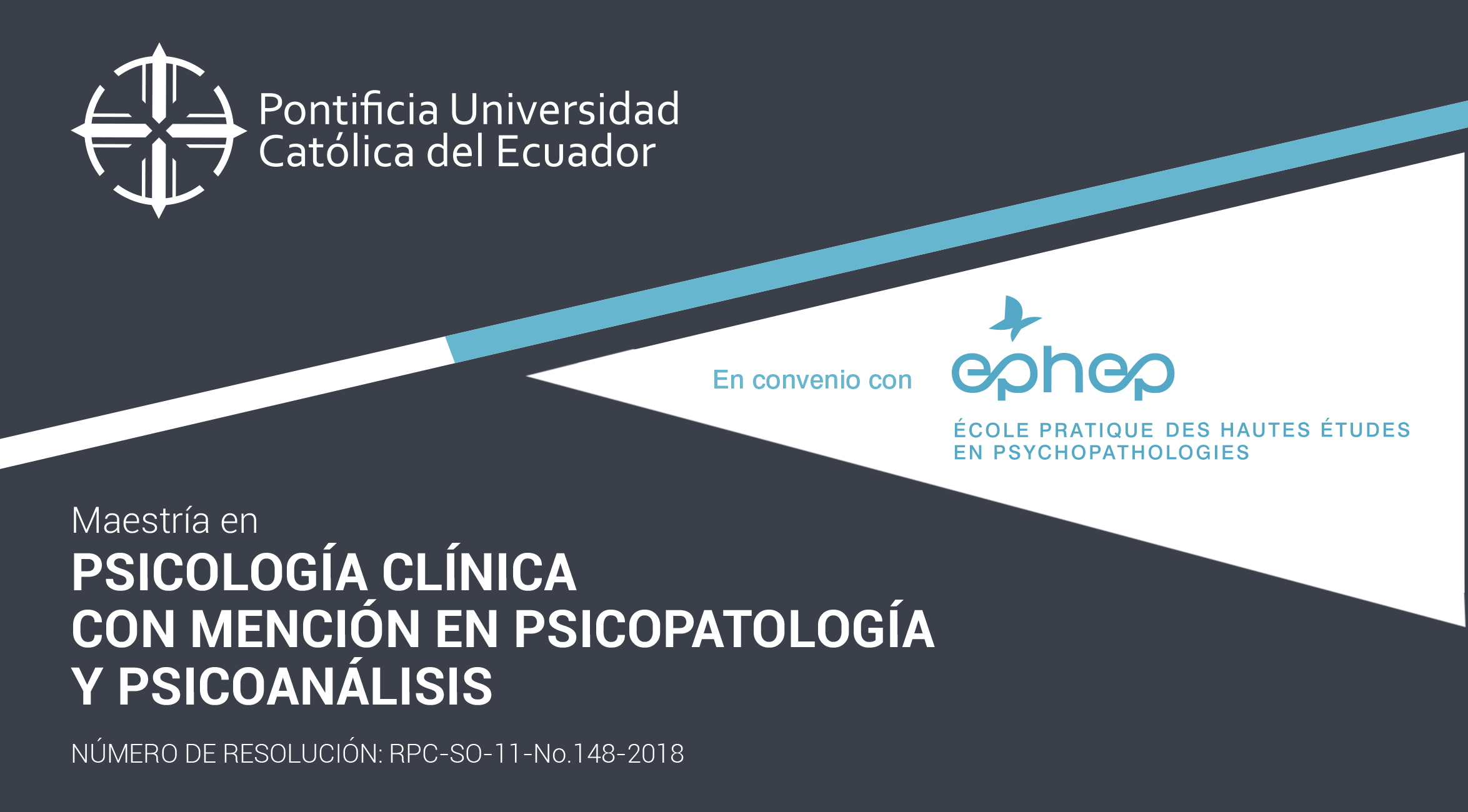
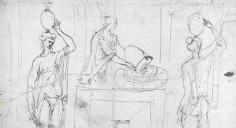

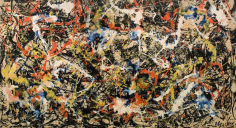
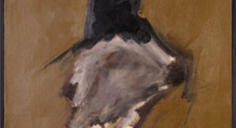
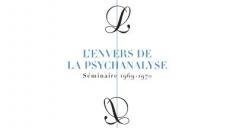

Symptoms as a representation of identificatory conflicts*
Introduction
Sergei Pankejeff (1887-1979) moved from Russia his country of birth, in the wake of the Russian Revolution in 1905, to Germany. The following year, his sister committed suicide (1906); followed by his father’s suicide in 1907, reducing the family unit to mother and son by the time he commenced his analysis with Freud in 1910, when he was 23 years old.
During his childhood Pankejeff had a series of ‘neurotic’ disturbances which included a change in his character at age 3.5 years; an animal phobia from age 4 years; appearance of obsessional phobia at age 4.5; hallucination of loss of finger at age 5 and another outbreak of obsessional neurosis between ages 8-10 years.
Some years later in his 18th year, he had several inpatient stays in German Sanatoria due to a mental breakdown, which appears to have been precipitated by a gonorrhoeal infection. He was subsequently diagnosed with a manic–depressive disorder. Freud refuted this diagnosis, having detected no changes of mood during the years in which he analysed Pankejeff. Freud considered his symptomatic presentation of chronic disturbances of his intestinal function, his passive homosexuality and type of object choice, to be that of an obsessional neurotic structure.[1]
Pankejeff undertook two periods of analysis with Freud between 1910/14 & 1919/20, (of whom he considered himself to be Freud’s favourite son) and two further periods of analysis with Ruth Mack Brunswick, during 1926/27 and 1932 for his paranoid illness. Pankejeff’s symptoms persisted throughout his lifetime, including a period of delusions which were both persecutory and grandiose[2] . He retained his persona as “The Wolfman” until his death at 92 years, an indication perhaps that Pankejeff could not assume his own authenticity. Did he derive jouissance from his symptoms and refuse to separate from the source of his satisfaction? A position Gérard Amiel describes as “the fixity of a man who refuses to budge from his place”. [3]
What accounted for Pankejeff’s ongoing suffering? Is it possible that his symptoms persistence were partly determined by his witnessing a primal scene; a seduction by his sister at aged 3.5; his identification with his mother and taking his father as his love object? Lacan suggests the conflict belongs to the registrar of male and female sexual aspirations.[4]
The Dream, The Primal Scene and The Mirror Stage
Constructed through an anxiety dream at the age of four, but occurring during the oral–anal stage of Pankejeff’s history, (18 months) he witnessed his parents copulating- coitus a tergo.
“I dreamt it was night and I was lying in my bed. (my bed stood with it’s foot towards the window; in front of the window there was a row of old walnut trees. I know it was winter when I had the dream and night time). Suddenly the window opened of its own accord and I was terrified to see some white wolves were sitting on the big walnut tree in front of the window. There were six or seven of them. The wolves were quite white, and looked more like foxes or sheep dogs, for they had big tails like foxes and they had their ears pricked like dogs when they pay attention to something. In great terror evidently of being eaten up by the wolves, I screamed and woke up”.[5]
While Freud queries the actual occurrence of the primal scene on a number of occasions throughout the text, referring to it possibly as a phylogenetic heritage, [6] Lacan suggests that it is the truth of our experience that matters, bypassing the question of whether the act of parental copulation occurred.[7] Gérard Amiel suggests that the primal scene was Freud’s way of speaking about a fundamental phantasy. “The primal scene is a construction…a translation of our fundamental phantasy. Before the fundamental phantasy there is no subject”. [8]
There are two movements in the primal scene, the witnessing of his parents coitus (external) and Pankejeff’s bowel movement (internal). Freud describes the parent’s intercourse from behind as being especially favourable for observation. “He was able to see his mother’s genitals as well as his father’s organ; and he understood it’s significance”. (Footnote “he understood it at the time of the dream, not at the time of the observation”).[9]
“The activation of the primal scene in the dream now brought him back to the genital organisation. He discovered the vagina and the biological significance of masculine and feminine. He understood now that active was the same as masculine while passive was the same as feminine”. [10] However in his associations with the dream, the wolf appears to represent male and female. The wolf at the bottom of the pile like his mother has no tail. It appears that Pankejeff understood that the woman was castrated. However in his association with the fairy story “The Wolf and the Seven little Groats”,[11] is there evidence of lack of clarity about sexual differentiation? The wolf eats the children, keeping them inside him until they are cut out whereby they are replaced by stones. It is usually the mother who is the devouring one and the child’s fear of being swallowed whole is not unusual. According to Freud, during the process of the dream, there was a possibility of inserting the symbolic father. There is evidence of fear of the father with the presence of the upright wolves, reminiscent of the wolves in the picture book, with which his sister used to frighten him. Instead young Pankejeff awoke, put anxiety in its place and was consoled by his nurse. Pankejeff negated castration and held to his theory of intercourse by the anus. “The feminine aim however underwent repression and was obliged to let itself be replaced by fear of the wolf”.[12] This attitude however was not his final one. In the end there were 2 contrasting currents, one abominated castration, the other was prepared to accept it and console itself with femininity as compensation. [13]
With regard to the bowel movement “the column of faeces stimulates the erotogenic mucous membrane of the bowel, it plays the part of an active organ in regard to it; it behaves just as the penis does to the vaginal mucous membrane and acts as it were, as it’s forerunner during the cloacal epoch”.[14] In this scenario the sexual drive seems to have attached itself to faeces. For children faeces is the first gift to the parent. However for Pankejeff the path of association between the sexual object and the sexual drive may have become eroticized and manifested in symptoms of constipation and the administration of enemas, which continued through his child and adulthood.
Lacan links the Mirror stage to that period of the child’s life between 6 and 18 months, a period during which a certain type of identification begin to take shape, and one in which a particular libidinal relationship with the body image develops. Towards the end of the mirror stage the child has knowledge of himself. The child’s primary identification with this body image promotes the structuring of the I and sets in motion an aspect of psychic experience which Lacan calls the fragmented body. [15] “The entire process of this conquest of identity is grounded in the imaginary dimension, in that the child identifies himself through something virtual (the optical image) that is not himself but something through which he none the less recognises himself”.[16]
The primal scene is situated towards the end of the Mirror Phase and according to Lacan “it induced passivity and this passivity constituted the unconscious homosexual fixation”.[17]
The Grusha scene
The primal scene gains its significance through the ontogenetic. In the case of Pankejeff there are other scenes and experiences which are significant. The Grusha scene emerged spontaneously in the patient’s memory during his analysis. Aged about 2.5 years, Pankejeff recalled witnessing his Grusha (his nursery maid who was very fond of young Pankejeff), kneeling down scrubbing the floor. With her buttocks projecting and her back horizontal, he was faced once again with a posture which his mother had assumed in the primal scene. The boy excited by the scene, micturated and she rejoined in a joking manner with a threat of castration. The observation of coitus a tergo in the primal scene was transferred on the scene with Grusha and was carried forward. In his later sexual relations it was necessary that woman assume this position. From his puberty he had felt large and conspicuous buttocks as the most powerful attraction.[18] The buttocks would appear to be associated with the absence of lack, and became the fethistic object projected onto the veil. According to Ruth Mack Brunswick around the time of the Grusha scene there was also an experience, which Pankejeff revealed to her in analysis. Both his Nanya and he went to the toilet where upon she inserted her finger into his anus to help him defecate. Brunswick claimed this incident of anal masturbation was not an isolated one. [19]
The Seduction
Between the primal scene at age 1.5 and 4 years of age, the sexual meaning of the scene of intercourse both terrifying and desirable, was retrospectively created for the growing boy through his maturing sexual knowledge. On the cusp of genital organisation, the seduction by his sister, 18 months older than him occurs when he is 3.5 years.
Defining it as occurring in a period when his father was away from home and his mother was in the next room, “his sister took hold of his penis and played with it, at the same time telling him incomprehensible stories about his Nanya. His Nanya, she said, used to do the same things with all kinds of people,- for instance, with the gardener, she used to stand him on his head, and then take hold of his genitals”. [20] Lacan suggests that Pankejeff had a proper genital relationship with his sister. “There is properly speaking, no instinctual retardation in his case. There are very lively instinctive reactions which are ready to break through the opacity that fixes and stagnates his personality”. [21]
According to Freud the seduction has a Nachtraglichkeit effect.[22] This deferred action revises the history of the subject and embodies his development since birth. Was it the emergence and realisation of the anatomical differences between the sexes, which has dire consequences for him, if he wished to maintain the mother as having the maternal phallus? Under the influence of the seduction Pankejeff’s fragile genital organisation broke down and regressed to that of the sadistic anal organisation.[23] During the sadistic anal phase, the contrast between masculine and feminine plays no part as yet; it is the active–passive binary which is important. What appears as activity turns out to be mastery which easily passes over into cruelty. Trends with a passive aim are attached to the erotogenic zone of the anal orifice. “This form of organisation can persist throughout life and can permanently attract a large portion of sexual activity to itself. The predominance in it of sadism and the cloacal part played by the anal zone give it a quite peculiarly archaic colouring”.[24]
Identification
At 18 months old, the baby is in the throes of the sadistic-anal organisation. Trends with a passive function move from the oral zone to the erotogenic zone of the anal orifice. The instincts for looking and for gaining knowledge (the scopophilic and epistemological instincts) are also prominent. The scopophilic experience produces passivity. [25]
Under the influence of his sadism, the affectionate significance gave place to an aggressive one. In his sadism he maintained his identification with his father but in his masochism he chooses him as a sexual object. [26] In his paper on Identification, Freud writes “it is easy to state in a formula the distinction between identification with the father and the choice of father as an object. In the first case one’s father is what one would like to be and in the second case he is what one would like to have. The distinction that is, depends upon whether the tie attaches to the subject or the object of the ego”.[27] His identification with his mother was evident in his early childhood with the confluence of similar somatic disorders of both mother and child. In his later elaboration of the primal scene, Pankejeff put himself in her place and envied her the relation with his father. “The organ by which his identification with woman, his passive homosexual attitude towards men, was able to express itself was the anal zone”. [28]
What are the implications for Pankejeff in his identification with his mother and positioning his father as his love object?
Mother
In Pankejeff’s earlier identification with his mother, has he denied the image of himself as male including his body image? Freud acknowledges the child’s reaction to his impressions of the absence of a penis “They disavow the fact….. woman whom he respects, like his mother retain a penis for a long time. For him, being a woman is not yet synonymous with being without a penis”.[29] In this paper he also speaks to the active/passive binary which is what the pregenital sexual child is aware of, rather than awareness of male and female. In his 1936 paper [30] Freud suggests that with a denial of the mother’s penis, the child takes hold of something else instead, a part of the body or some other object and assigns it the role of the penis, which he cannot do without.
During the pre-oedipal period Pankejeff learnt through his sexual researches and experiences about castration and cast doubt upon the cloacal theory “however he rejected what was new (in our case from motives connected with his fear of castration) and clung fast to what was old. He decided in favour of the intestine and against the vagina”. [31] He identifies the mother as having the phallus, rather than wanting to be her phallus. He transforms the lack into a fetishistic object, which becomes inscribed on the veil, rather than wishing to be the object of her desire. It is the father by whom he wishes to be desired.
When we are talking about identification, are we talking about identifying with “it”, something outside the mother, a register beyond the body image of the penis or lack of penis, into what Lacan terms the register of the phallus? The penis is a tangible object that can lead us to believe that desire can be satisfied, but the phallus is a signifier, an elusive imaginary object, conceived in the interplay of relations, that is translated into individual lack. The task for the child is to free himself from this identification with the imaginary phallic object. We have seen how the mother’s lack has to be named or symbolised for the child to come into being. If Mother has the phallus can her desire be named? The not naming proves difficult for the child in and may be related to difficulties with sexual differentiation. Pankejeff appears to be caught up in the mother–phallic order.
Father
Taking his father as his love object had reverberations for Pankejeff. In his 1916 paper, The Development of the Libido, Freud says “in the years of childhood before puberty, the process has in some respects reached a conclusion, the object that has been found turns out to be almost identical with the first object choice of the oral pleasure instinct which was reached by attachment to the nutritional instinct”. [32] We know that in the case history Freud refers to the relationship with the father as his primitive object-choice. [33] While we see a second current emerging with a narcissistic investment in his penis during the pre–oedipal period, Pankejeff continues through this period with intestinal disorders, which echoed his mother’s lament about abdominal pains.
In neurosis, arising from the usual fright of the threat of castration, the child obeys the father. But where the father is absent, first masochism and then a father substitute is inserted to lay down the law. The masochist is in need of separation, a separation as part and parcel of castration has not occurred. While the masochist would like to believe and make us believe that he aims to give the Other jouissance, he aims to make the Other anxious. The masochist tries to bring something into being, by which the Other’s desire makes the law. [34] According to Freud, Pankejeff’s “fear of his father was the strongest motive for his falling ill and his ambivalent attitude towards every father surrogate was the dominating feature of his life as well as his behaviour during the treatment”. [35] Pankejeff senior never threatened castration. That threat was issued by women. In his notes on the Wolfman Lacan says “the rivalry with his father is far from being realised and is replaced by a relationship that from the beginning presents itself as a preferential affinity for the father: The Wolfman loved his father who was very kind to him; there Is an affective preference. The father is not a castrator either in his action or his being (very quickly he falls ill, more castrated, than castrator)”. [36]
Between the primal scene and the seduction by his sister, there was a period when Pankejeff appeared to identify with the father: when asked what he wanted to be, young Pankejeff he used to reply a gentleman like his father.[37] Following the seduction, it appears that the object of his active current became the sexual object of his passive current with a regression to the anal-sadistic libidinal organisation. His father was his love object once more, a father from whom he wished sexual satisfaction. Was this the source of anxiety in the dream or in the return of the primal scene? Or was it the passive attitude and the identification with the mother which was a reminder of the primal fragmentation and therefore the anxiety of fragmentation which awoke him from the dream?
We see several attempts by Pankejeff to evoke the father’s law. In the beating phantasy, boys are chastised and beaten on the penis. Freud explains this as Pankejeff’s sadism turned around on himself and converted to masochism.
Religion
Pankejeff’s mother acquainted him with the Bible story when he was four and a half years old in the hope of distracting him from his naughtiness and his animal phobia. His initiation into religion did bring the previous phase of the animal phobia to an end, but it led to anxiety symptoms being replaced by obsessional symptoms. Religion made up for the father’s absence. It teaches Pankejeff about the name of the father and the son. The child is calmed down for awhile. But he is dissatisfied with God, the Father “If he were almighty, then it was his fault that men were wicked and tormented others and went to Hell for it”. And what about Christ, who shared the same birthday as Pankejeff, did he have a behind, “could the sublime son fullfill the sexual relationship with the father. The truth was that the mental current which impelled him to turn towards men as sexual objects and which could have been sublimated by religion was no longer free: a portion of it was cut off by repression and so with drawn from the possibility of sublimation and tied to it’s original sexual aim” [38] and why was Christ passive in the face of the father not protecting him, asks the boy. Pankejeff rebelled against God who treated his son harshly and cruelly and sacrificed him. According to Lacan, religion had almost socialised his difficulties. “But it came to grief on the dogma of incarnation. The relationship between God the Father and the Son are felt to be masochistic and send him back to his fundamental anxiety before the absolute passivity of the primal scene. His whole ego is nothing other than the negation of his fundamental passivity”.[39] The quest for the symbolic father continued. The boy is unable to identify himself with a properly paternal imago, fulfilling the symbolic function of the father.
The Veil
In the case history, Freud tells us that Pankejeff’s “Principal subject of complaint was that for him, the world was hidden by a veil. This veil was torn only at one moment-when after an enema, the contents of the bowel left the intestinal canal and he then felt well and normal again.” … The effect was the same whether he had the enema given him by someone else or whether he managed it himself”. [40]
“Why is a veil more precious to a man than the reality,” asks Lacan in Seminar 1V.[41] On the veil there is an imaginary capture and place of desire. “With the presence of the curtain, what is beyond as lack tends to be realised as image. On the veil absence is painted. This is nothing other than the function of the curtain, whatever it may be. The curtain takes on it’s value, it’s being, and it’s consistency, by being precisely that which absence is projected and supposed”. [42]
Earlier in the seminar Lacan says what the subject “projects onto the veil is specially borrowed from the historical dimension. “It is the moment of history at which the image is arrested.” [43] The fascinating object inscribed on the veil is the fethistic object around which the subject’s erotic life gravitates. The fetish is a symbol of something…it is a symbol of the phallus; it is the phallus in so far as the woman has it that is in so far as she doesn’t have it. “It is simply an affair of the misconstruction of the real…it is a matter of the phallus which the woman does not have and which she must have for reasons belonging to the child’s dubious relation to reality”. [44] In this scenario, the infant child refuses to recognise the mother’s castration that is the mother’s lack. It was the buttocks and anus which plugged the mother’s lack and became the source of jouissance for young Pankejeff. “The fetish is incarnated in an object which we can consider as corresponding in a symbolic way to the phallus which is absent”. [45] It is the moment of history at which the image is arrested.
Conclusion
As G. Amiel so succinctly formulates it, “The Name of the Father has not operated, castration has not operated and that object cause of desire does not function either…that is why he cannot be in a normalised kind of desire with a woman”. [46]
Ros McCarthy
* This text is based on a paper presented at a cartel study day at Milltown Institute, Dublin on the 5th October 2013.
Ros McCarthy is a psychoanalyst, practising in Dublin and Kildare.
[1] S. Freud. An Infantile Neurosis and Other Works. S.E., XV11.
[2] J. Lacan. Draft notes on the Wolfman, 1952-1953; p.23. Unpublished.
Translation; Cormac Gallagher.
[3] G. Amiel. In conversation at cartel study day; 5th October 2013. Dr Amiel is a psychoanalyst from Grenoble who kindly agreed to be the Plus One for our cartel. Members of the cartel are Ruth Breen, Nellie Curtain, Ros McCarthy, Malachi McCoy, Helen Sheehan.
[4] Op. cit. Draft notes on the Wolfman; p. 12.
[5] Op. cit. An Infantile Neurosis and Other Work; p.29
[6] Ibid. p. 97; 103; 119-21
[7] Op. cit. Draft notes on the Wolfman; p.16.
[8] Op. cit. G. Amiel, in conversation.
[9] Op. cit. An Infantile Neurosis and Other Works; p.37
[10] Ibid. p.47
[11] Ibid. p.31
[12] Ibid. p.47
[13] Ibid. p.85
[14] Ibid. p.84
[15] J. Lacan. The mirror stage as formative of the function of the I as revealed in psychoanalytic experience. In Ecrits, A selection; pp. 1-7. Editions du Seuil. 1966
[16] J. Dor. An introduction to the reading of Lacan; p. 97. Other Press. 1998
[17] Op. cit. Draft notes on the Wolfman; p. 4.
[18] Op. cit. An Infantile Neurosis and Other Works; pp.91-97
[19] W. Davis. Drawing the Dream of the Wolves; p. 218: Indiana University Press 1995
[20] Op. cit. An Infantile Neurosis and Other Works; p.20
[21] Ibid. p.13
[22] Ibid. p.47
[23] Ibid. p.109
[24] S. Freud. A Case of Hysteria, Three Essays on Sexuality and Other Works; S.E.,V11, pp.198-199
[25] S. Freud. Introductory Lectures on Psychoanalysis; S.E., XV1, p.327
[26] Op. cit. An Infantile Neurosis and Other Works; p. 63
[27] S. Freud. Beyond the Pleasure Principle, Group Psychology and Other Works; S.E., XV111, p.106
[28] Op cit. An Infantile Neurosis and Other Works; p.78
[29] S. Freud. The Ego and The Id and Other Works;. S.E., X1X, p.143
[30] S. Freud. Moses and Monothesism, An Outline of Psychoanalysis and Other Works. S.E., XX111, p.203
[31] Op. cit. An Infantile Neurosis and Other Works; p.79
[32] Op. cit. Introductory Lectures on Psychoanalysis; p.329
[33] Op. cit. An Infantile Neurosis and Other Works; p.27
[34] J. Lacan. The Seminar of Jacque Lacan, Anxiety, 1962-1963 Book X .
Session of the 13th March 1963. Unpublished. Translated Cormac Gallagher.
[35] Op. cit. An Infantile Neurosis and Other Works; p.32
[36] Op. cit. Draft notes on the Wolfman; p.14
[37] Op. cit. An Infantile Neurosis and Other Works; p.27
[38] Ibid. p.117
[39] Op. cit. Draft notes on the Wolfman; p.26
[40] Op. cit. An Infantile Neurosis and Other Works; p.75
[41] J. Lacan. La relation d’objet et les structures freudienne 1956-1957.
Book 1V. The Function of the Veil. Session of 30th January 1957. p 177 Unknown Translator
[42] Ibid. p.173
[43] Ibid. p.176
[44] Ibid. p.169
[45] Ibid. p.172
[46] Op. cit. G. Amiel, in conversation.